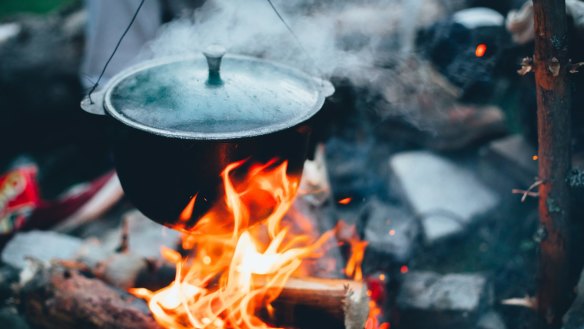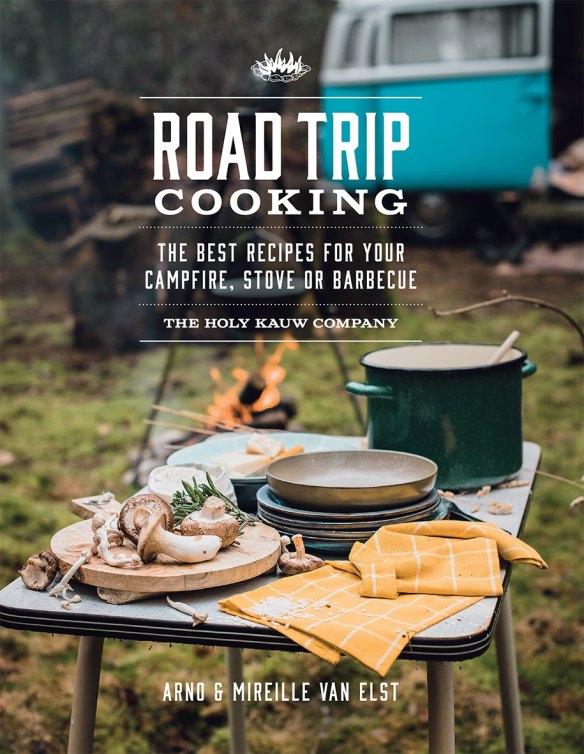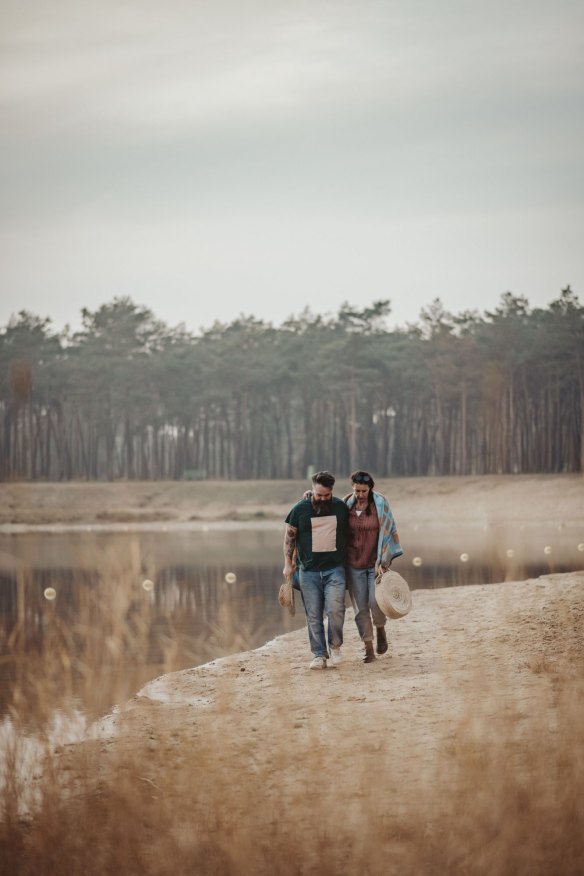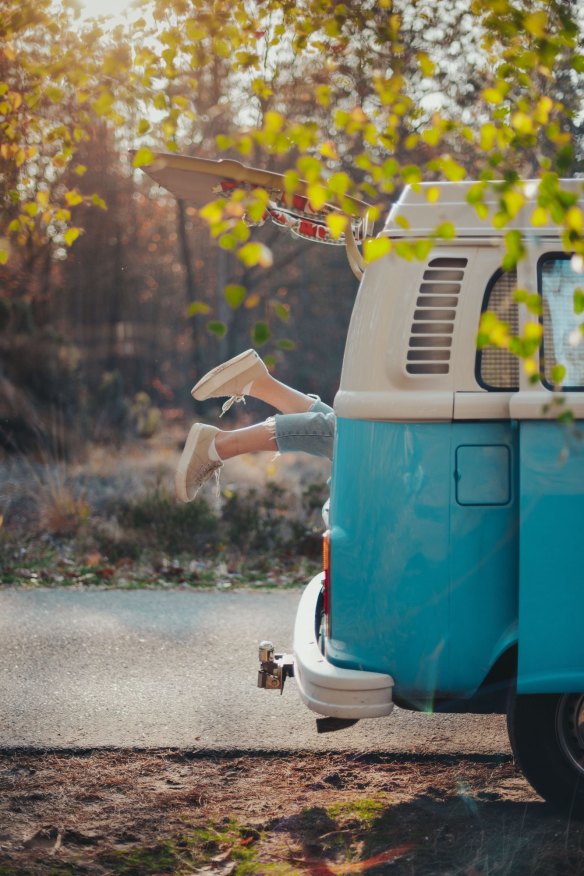Ingenious camping and road trip hacks for eating well on the road

When you're on the road it's best not to bring too much stuff, so Dutch caterers Arno and Mireille Van Elst share some road-trip hacks from their new book Road Trip Cooking that that will make cooking fun and easy.
Good things come in small packages

Sugar, salt and pepper, mustard, little jars of jams, small tubs of butter and refresher wipes – if you know you are going on a road trip, it's handy to bring them along, but these are things you can leave behind on your road stops when you're finished with them. This way you have seasoning on hand without having to drag heavy pots and packs along. The same goes for small packets of soy sauce, wasabi and ginger; these are ideal for life on the road.
Lightweight herbs and spices
We like cooking with herbs, so to avoid carrying too much we have collected little lip balm containers, toothpick holders and sweet tins so we can store small amounts of dried herbs and spices in them and take them on our trip.

Washing bag for a strainer
A washing bag works very well for draining rice, pasta or vegetables. And it takes up very little room.
Sleeping mat for a cooling element

Keep items cool by placing them under your sleeping mat when you sleep in a tent. Tents heat up quickly, but temperatures stay lower under the sleeping mat as the ground is cooler and isolated under the mat. This way you can keep wine, butter and chunks of cheese nice and cool. Don't forget to check you've removed all the food before going to sleep.
Rock for a pestle
A big rock and a tree stump work perfectly as a pestle and mortar. Crush garlic, mix spices or crack open nuts. Make sure the rock and tree stump are free from sand and grit.
Rock for a grill
You can cook pork belly to a perfect crisp on a stone by the fire. The same probably goes for eggs, but we haven't tried that.
Cooking on the road
While on the road we cook with practical items and techniques. Take the time to make a fire, build a barbecue or have the charcoal reach the right temperature. Slow cooking your meals makes your food even tastier. An added bonus: it makes you incredibly zen.
Fire: Nothing is more enjoyable than making a good fire (fire restrictions permitting). You can hang a pot off a campfire tripod, bake potatoes and vegetables, melt marshmallows on a stick and cook an egg in a paper bag. A fire is also a great way to stay warm on colder nights. Some tips: Always check you are allowed to have an open f ire at the campsite. Not only because you risk get ting a fine but also because it can be outright dangerous. Always keep a jerry can with water on standby when you're having an open fire. Put out the fire when you go to sleep or hit the road. Respect nature and the environment and leave things as you found them.
Barbecue: When preparing food on a barbecue, make sure you wait until the charcoal reaches the right temperature before you start cooking. If you don't have a barbecue lid, you can place a bigger pan upside down on top of the grill and cover the food that way.
Dutch oven: A cast-iron pan is heavy and not the most practical item for on the road, but we consider it essential. You can use this cast-iron friend for virtually anything. We bake bread with it, and make stews and soups in it. We also use it to make omelettes or bake potatoes. You can put a Dutch oven directly on the charcoal or in the fire, and you can play with the temperature by varying how much charcoal or wood you use under it or on top of the lid.
Cooking inside a tin: An empty tin can be used to heat up food or you can even bake bread in it. This can be a fun activity to do with the kids and different from cooking bread on a stick. You can also boil water inside a tin, but watch out for the sharp edges.
Cooking on your engine: It's really possible! Wrap the food, place it on the engine block and drive off to your next destination. By the time you reach your next stop, it will be ready. How amazing is that? When you drive, the engine reaches around 90C – this heat is perfect for cooking. It's important to find out where the hot spot of the engine block is. The best way to find out is to carefully dab different parts of the engine with a drop of water after a long drive. Cooking on an engine block is safe, does not smell and does not damage your car. Make sure you use enough aluminium foil when wrapping food and that it is tightly wrapped so no moisture or fat can escape. Avoid using too much liquid or fat to prevent leakage. One last tip: it's a good idea to use gloves and tongs to pick up the hot parcel from the engine.
Single burner stove: Not just for making coffee or heating up a tin of soup, the single-burner stove can be used to cook great recipes. We make one-pot meals with it and, if we need to use more pans, we keep the food warm by placing the pan in a sleeping bag. It's all about thinking outside the box.
Packing list
You get the idea, you don't need a lot to put a good meal on the table, but we always take the following items with us:
- Box of matches. We keep a few boxes in different places because it's possible for leaks to appear after a downpour, right where you keep the matches! So it's better to be safe than sorry.
- Charcoal (not briquettes)
- Sharp chef's knife
- Chopping board
- Aluminium foil, an absolute MUST for your outdoor kitchen. You can keep meals warm with it but we also use it to build mini-ovens.
- Survival pocket knife (with a can opener)
- Jerrycan with clean water. Refill at every stop. You really don't want to run out.
- Lightweight pans
- Wooden spoon
- Grater
- String
- Duct tape. Everything can be fixed or solved with this fantastic roll of tape. Lifesaver number one when on the road.
- Wooden pegs, just as multifunctional as duct tape. You can use them to close packets, hold a small light, tie neatly rolled cables and rope, clamp your sunglasses to your sun visor, clamp it to the wooden spoon while cooking so it doesn't slide into the pan, and so on.
- Gloves to move hot pots and parcels from the fire. Also handy for wild picking.
- Tongs to pick up smouldering charcoal and wood, and to turn over food on the fire.
- Rubber bands to close packets and keep things bound together.
- Paper bags to pack lunch, to bake eggs in and to use as a bin bag.
- Steel wire brush or steel wool to keep the barbecue grill clean.
- Coffee percolator because, oh boy, even on holiday, you can't start your day without a coffee!
Preparation time
The preparation time for meals prepared outdoors is difficult to determine with exact precision. It is dependent on a number of things such as weather conditions, the time it takes to start a decent campfire and get the barbecue going and, of course, the actual temperature of the fire or barbecue.
This is an edited extract from Road Trip Cooking by The Holy Kauw Company, Arno and Mireille Van Elst, published by Hardie Grant Travel, RRP $29.99. Buy now